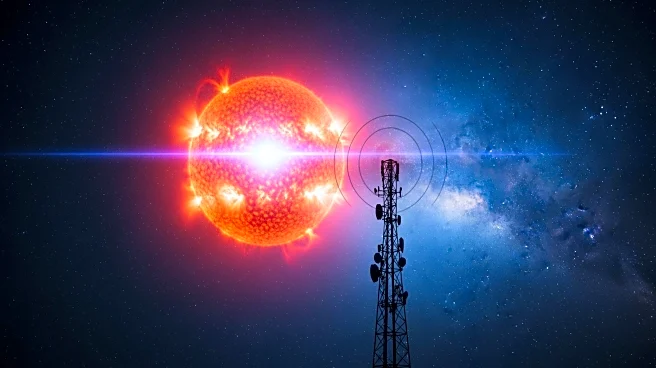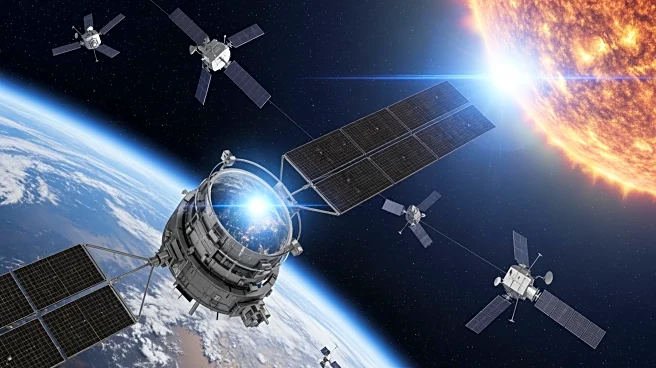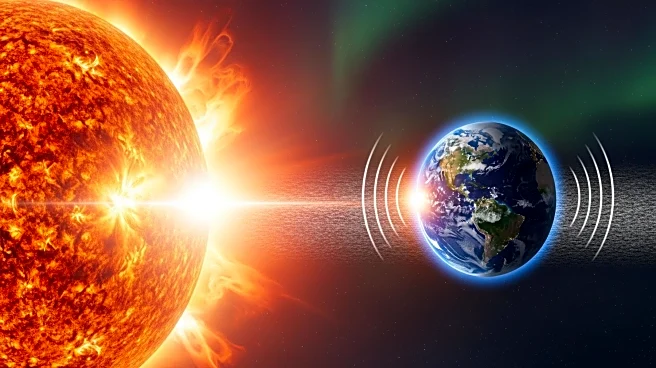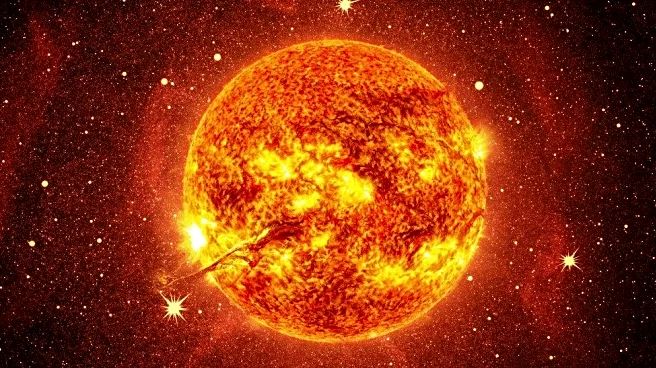What's Happening?
The National Oceanic and Atmospheric Administration (NOAA) has reported a series of solar flares disrupting radio communications across various regions. Two significant solar flares occurred on Tuesday,
affecting areas from North America to Australia. A moderate solar flare was recorded on Wednesday, with potential geomagnetic storm conditions anticipated. These solar flares release coronal mass ejections, which can interact with solar winds, causing disruptions in communication systems.
Why It's Important?
Solar flares can have substantial impacts on communication infrastructure, affecting industries reliant on radio communications, such as aviation and maritime operations. The disruptions highlight the vulnerability of global communication networks to space weather events. Stakeholders in telecommunications and emergency services must prepare for potential outages and develop strategies to mitigate the effects of such solar activities.
What's Next?
NOAA's Space Weather Prediction Center is analyzing the latest solar flare to assess any Earth-directed threats. If geomagnetic storm conditions develop, further disruptions in communication systems could occur. Industries affected by these events may need to implement contingency plans to ensure operational continuity. Monitoring and forecasting solar activity will be crucial in minimizing the impact on global communications.
Beyond the Headlines
The occurrence of solar flares raises questions about the resilience of modern communication systems and the need for advancements in technology to withstand space weather events. Long-term, this could drive innovation in satellite and communication technologies, enhancing their ability to cope with solar disruptions.












